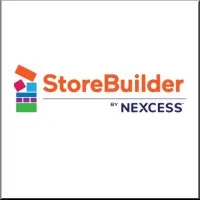10 steps to create a perfect ecommerce website for SMBs
Start setting up your online store straight away

When the brick-and-mortar stores got shut down with the whole world during the pandemic lockdowns, the ecommerce business exploded. Shopping online no longer seemed like a question of choice but one of necessity, and many businesses had to choose between branching out or getting shut down for good. Now, while the pandemic seems to be entering its endgame, the ecommerce business isn’t slowing down in the least. So, if you ever wished to launch your online store, this might be a perfect time.
However, creating an online store and setting it up for success isn’t child’s play. Many small and mid-sized business (SMB) owners put off building ecommerce sites for their businesses thinking they’re not tech-savvy enough, that they don’t have a big enough budget or enough time for such an endeavor.
Well, with ever-evolving technology trends and new site-building tools coming out now more than ever before, almost anyone can create a fully-functional and good-looking online store with no web development skills, on a small budget, and in no time.
So, whether you’re coming up with a strategy to create your first online store, or upgrade your current one, here are 10 crucial steps to get it started.
Try StoreBuilder Risk Free For 30 Days
Create an online store that’s customized, beautiful, and unique in just a few clicks with StoreBuilder by Nexcess. Hundreds of dollars worth of features bundled for only $19 a month.
1. Examine the ecommerce market and find your place in it
The first step of starting an ecommerce business is opening your own investigation of the ecommerce sector you're interested in and identifying whether there is a need for your specific business idea. For instance, you’ll want to know what kind of products or services your online store is going to offer and how they fit into the bigger picture.
You’ll also want to know if you’re going to sell physical products, digital products, or perhaps both. Are you going to buy products from a supplier and resell them, or you’ll be creating your own products? What kind of business model do you wish to apply and will you be selling individual products, packs of products, or subscriptions? These are only a few among the many questions you’ll want to ask yourself before making the first move into the ecommerce market.
Although the ecommerce market is now growing at an unparalleled pace, so does the number of ecommerce start-ups, which means more competition for your business. One way to make your business shine and stand out in a crowd is to choose a specialty that can’t be found anywhere else. Or, you can choose a more channel-oriented path and pick out a popular specialty and face your competition down by offering superior or cheaper products or services, or by adding a symbolic value to them.
Sign up to the TechRadar Pro newsletter to get all the top news, opinion, features and guidance your business needs to succeed!

2. Build your business plan and set your budget
Just like any other ecommerce start-up, yours should start with an exhaustive business plan that’ll summarize all of its objectives and how you plan to reach them. So, before bringing your ideas into reality, come up with a game plan, and don’t forget to tackle the technical aspects of an ecommerce business as well.
Also, before breaking the ice, you’ll want to set the budget for your ecommerce store. First of all, consider the entire cost of creating an online store such as domain name registration, a web hosting service, and choosing an ecommerce site-building solution or hiring a web designer to build the site for you. However, if you wish to go with the latter option, be prepared to part with quite a lot of cash.
On the other hand, with most ecommerce website builders, you can get away with paying around $5.00 per month and you’ll even get a money-back guarantee if you happen to change your mind. Also, don’t overlook the cost of all additional applications you wish to use, stunning ready-made themes for sale, further features, plugins, and functionalities. If you do, the overall cost of running an online store can add up quickly.
3. Pick a perfect business name
Now that you’ve found your place in the market and know how much it will cost you to start, you’ll also want to come up with a perfect name for your ecommerce business. This step also includes choosing a name for the domain you’re going to register and it’s no less important since the right name can strengthen the credibility of your site and help build up your brand identity. So, here's a tip: pick out a business name that’s easy to remember and has some connection to the products or services you’re selling or the emotion they should evoke.
With a good and SEO-friendly domain name (choose any of the top-level domains if you can), your potential customers will find your site more easily and you’ll be able to make a better first impression.
If you want to shield your brand from copycats, you could up your game even further and register all related domain extensions (like .com, .org, and .net) which will make them out of reach of your competitors.

4. Choose secure, stable, and scalable web hosting
If you’ve already decided to build your online store with an ecommerce platform, you can skip this step, since web hosting is part of any platform’s all-in-one solution anyhow. If not, your next task is to find a secure, stable, and scalable web hosting provider and pick out a plan.
The hosting plan can cost you anything from three to a couple of thousand dollars, but if you’re flat broke there are also a few free web hosting providers (if you don’t mind your site being snowed under with ads). However, these aren’t recommended for anything more ambitious than a personal blog.
Usually, small business owners start with a shared hosting plan since it’s the most budget-friendly choice that’s also geared towards beginners. Then, as their business begins to grow they upgrade their plan to a virtual private server (VPS) and eventually switch to dedicated server hosting.
Since choosing a good web hosting provider can be a challenging task, make sure to check out where the prospective provider stands when it comes to resources (such as disk space, bandwidth, and RAM), security features (like SSL certificates, anti-DDoS, and anti-malware), scalability (that is, can you scale up/down your plan), and if the plan justifies the price you'll be paying for it.
5. Choose an ecommerce solution that’ll suit your business
With most ecommerce site-building solutions you won’t only be able to create and launch your online store, but also to customize it and make it stick out in the crowd. Since there are hundreds of similar solutions currently available on the market, choosing the one that’ll perfectly match your business might take some considerate thinking on your part. So, before opting for one ecommerce solution over the other, consider your level of technical know-how, as well as how much time and money you intend to invest.
The simplest way to start is by creating a storefront on one of the ecommerce marketplaces (like Amazon, eBay, and Etsy) since you can do it without having your own site. However, this also means you’ll never be a one-and-only owner of your storefront since the marketplace you’re on could kick you off the platform for breaking even one of the least strict rules.
Although you could take the opposite approach and go with an extravagant end-to-end ecommerce platform (like BigCommerce, Shopify, and Squarespace), most SMBs start with an ecommerce site builder (namely Wix, Zyro, or Weebly) since they are typically highly user-friendly but come at a low cost.
If you’re at least a bit tech-savvy (or have the best buddy who is), you could also choose one of the open-source ecommerce solutions (like WooCommerce, Magento, or PrestaShop).

6. Make sure to secure superb support for yourself and your customers
Another thing you’ll want to think about when choosing your ecommerce site-building solution, as well as your web hosting provider, is customer support. While the support you're going to need depends on your level of experience with the subject at hand, it’s good to know you have someone to rely on if something goes wrong.
With a company that offers phone or live chat support channels (preferably both), you should be able to solve all issues and concerns without significant delay. Although email support can be a useful asset, it often takes far too long which could make even an epitome of patience lose their cool.
On another note, all those who strive to stay self-sufficient should ensure that there are enough self-service options around, such as a help center filled with how-tos, FAQ page, and community forum.
Also, note that everything you want for yourself in terms of customer support you should also strive to provide for your customers. By making superb customer support one of your top priorities, you’ll turn indifferent and irritated visitors into loyal customers and get the new ones flowing in.
7. Create an uncomplicated yet captivating user interface
Upon visiting your online store, your potential customers will form a first impression about it in less than a minute. Given that you’ll only have a chance to make a first impression once per customer, it’s crucial to capture their attention with a positive image of your business showcased by clear yet captivating design.
There are a few rules of user-friendly UI (user interface) you’ll want to implement to ensure that your customers stay on your site and go on a shopping spree. First of all, a user-friendly UI instills a sense of control in the users, which will make them feel comfortable while flattening the learning curve. You’ll accomplish this by choosing good-looking graphics and easy-to-read fonts. Also, see to it that your site is simple to navigate which will allow your customers to swiftly get to the pages they want such as “About us”, “Products/Services”, and “Contact us” sections.
Another thing you’ll want to create is a sense of consistency in your store, which will make your site more user-centric, build trust in your brand, and win more lifelong customers in the long run.

8. Safeguard your online store from cyber security threats
One thing that new owners of SMB sites tend to overlook (or forget all about it) is the security of their ecommerce stores. So, don’t make a mistake thinking that your business is safe simply because it’s small at the moment. Truth be told, small businesses are more likely to be targeted by all sorts of cyber criminals than larger ones simply because they tend to overestimate their security and underestimate the danger.
Solid cybersecurity may be the most important feature of an ecommerce site and, without it, online store owners put themselves, their customers, and their brand at risk of being hurt by fraud or identity theft.
In addition to standard cybersecurity measures we’ve mentioned above, an ecommerce store needs to meet many compliance standards such as PCI-DSS (to ensure all credit cards are accepted, processed, and stored in a secure environment), GDPR (to ensure data protection and privacy in the EU), and CCPA (same as GDPR but in California).
If you’re using an ecommerce platform then you shouldn’t concern yourself too much with security challenges, since you’re already paying a pretty penny for a platform to take care of your concerns for you. However, with most open-source solutions you should be prepared to take the security of your store into your own hands.
9. Don’t forget about SEO and mastering the marketing tools
Now that your online store is all set up and ready to start selling, it’s time for a few finishing touches. The first thing you’ll want to do is to make your store SEO-friendly, meaning more people will see it, which will increase your traffic and the chance you’ll sell products or services to more people. So, whichever ecommerce solution you intend to use, it’s important to check out if it supports SEO and other critical ecommerce marketing tools.
Besides SEO-friendliness, you should also look for analytics tools, research tools, content marketing tools, social media integration tools, email marketing tools, pay-per-click advertising tools, and customer relationship management (CRM) tools. By combining all of these with a bit of creative thinking you can shape a successful SMB marketing strategy that is sure to raise your game.

10. Never stop learning from other successful ecommerce businesses
Now that you’ve created a splendid and soon-to-be-successful online store you could be forgiven for thinking your job is now complete. The truth is, no store should be created and left at that but treated as an ongoing passion project that evolves together with its market. So, keep your site fresh with new content and be swift when dealing with any potential or proven technical troubles.
If you happen to run out of clever ideas, don’t hesitate to turn to the work of your competitors and see what you can learn from their success. By keeping up with the Joneses and competitors you’ll help your ecommerce business uncover new opportunities, avoid the most common mistakes, and distinguish itself among the others.
Mind you, your objective is not to shamelessly copy your competitors nor to beat them in some sort of small-scale retail war, but rather to study their business strategy, learn what they’re doing right (and what wrong), light your creative spark, and come up with something on your own.
Start creating an ecommerce site for your SMB straight away
Creating an ecommerce store is a sure way for an SMB to stand out, especially in such an overcrowded market. However, it’s not a stroke of luck that’ll set your business up for overnight success. On the contrary, you’ll have to work your way up while keeping your fingers crossed and success will come to you sooner or later.
It doesn’t matter if you’re not a veteran webmaster, if you’re working on a small budget, or if you’re short on time – you can still create an online store for your business. The most important thing is to simply start out and take baby steps into the wondrous world of the ecommerce market.
We've also featured the best shopping cart software, the best payment gateways and the best cloud hosting
Mirza Bahic is a freelance tech journalist and blogger from Sarajevo, Bosnia and Herzegovina. For the past four years, Mirza has been ghostwriting for a number of tech start-ups from various industries, including cloud, retail and B2B technology.
